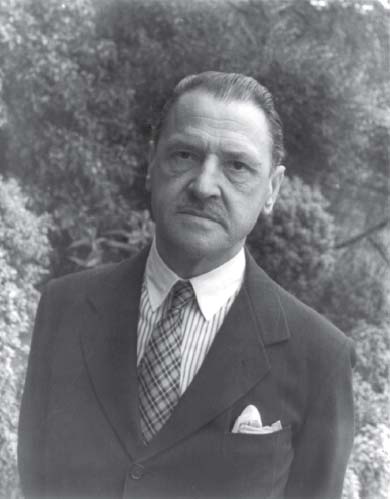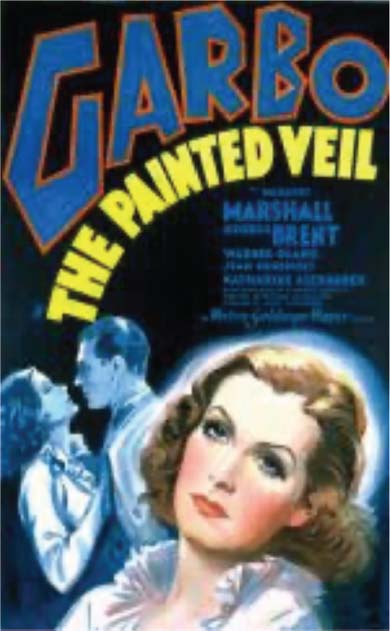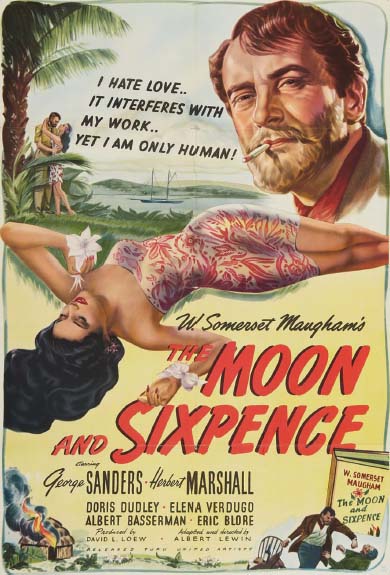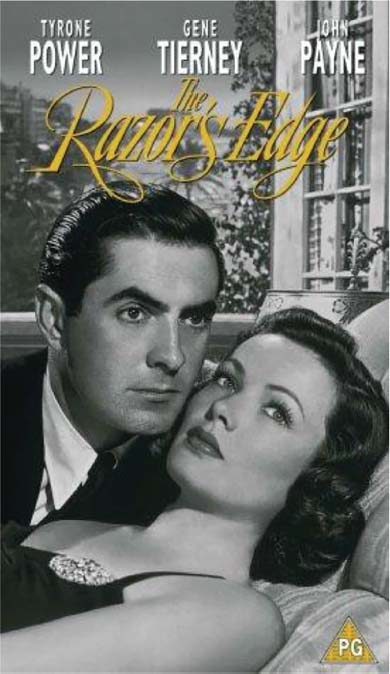ISSN electrónico: 1885-5210
DOI: https://doi.org/10.14201/rmc.32078
SOMERSET MAUGHAM, ANOTHER PHYSICIAN-WRITER, BETWEEN LITERATURE AND THE SCREEN
Somerset Maugham, otro médico-escritor, entre la literatura y la pantalla
María Silvia D’OTTAVIO‐-CALLEGARI1; Alberto Enrique D’OTTAVIO‐-CATTANI2; María Eugenia D’OTTAVIO‐-CALLEGARI3
1Facultad de Derecho. Universidad Nacional de Rosario, Rosario (Santa Fe), (Argentina).
2Facultad de Ciencias Médicas y Consejo de Investigaciones. Universidad Nacional de Rosario, Rosario (Santa Fe) (Argentina).
3Instituto Universitario del Gran Rosario, Rosario (Santa Fe) (Argentina).
Corresponding author: Alberto Enrique D’Ottavio Cattani
E-mail: aedottavio@hotmail.com
Received: May 23rd 2024
Accepted: June 24th 2023
Abstract
Following the approach already employed in an earlier article on Archibald Joseph Cronin1, physician, and writer, this paper focuses on William Somerset Maugham, another physician who successfully ventured into literature, producing many plays, novels, and short stories adapted to the screen (cinema and TV), herein chronologically listed and described.
Keywords: William Somerset Maugham; physician; writer; literature; screen; cinema; TV.
Resumen
Siguiendo el enfoque ya empleado en una publicación previa sobre Archibaldo José Cronin, médico y escritor, este trabajo se centra en William Somerset Maugham, otro médico quien incursionó exitosamente en la literatura, siendo muchas de sus obras, de teatro, novelas y cuentos adaptadas para la pantalla (cine y TV), aquí cronológicamente listadas y descritas.
Palabras clave: William Somerset Maugham; médico; escritor; literatura; pantalla; cine; TV.
Introduction
Following the approach already employed in an earlier article on Archibald Joseph Cronin, physician, and writer, this paper focuses on William Somerset Maugham, another physician who successfully ventured into literature, producing many plays, novels, and short stories adapted to the screen (cinema and TV), herein chronologically listed and described.
Life and Works of William Somerset Maugham
William Somerset Maugham (Photo 1) was born in 1874 in Paris but in British territory, since his father Robert Ormond Maugham, a successful solicitor, handled there the legal affairs office of the British embassy.

Photo 1. Somerset Maugham Photo
He never greatly liked his middle name Somerset which honored a great-uncle: General Sir Henry Somerset and throughout his life he was known as “Willie” by his parents and friends.
Maugham’s mother died of tuberculosis shortly after his eighth birthday. He used to say that her loss was a never entirely healed wound for him. For worse, two and a half years later, his father died, for which William was sent to England to live with his cold and distant paternal uncle Henry MacDonald Maugham, the vicar of Whitstable in Kent.
Until 1890 Maugham attended The King’s School, Canterbury, where he was teased by his companions for his poor English, short stature, stutter, and lack of interest in sports.
Around that year he left this school, moving to Heidelberg (Germany) to study German, philosophy and literature. During his time in Heidelberg he had his first sexual affair with an Englishman ten years older.
Back in England, he studied Medicine while waiting to be old enough to pursue his real vocation: becoming a writer. His years as a student turned out to be fruitful given his frequent experience with pain, death, and deprivation which provided him with endless insights to be further introduced into his profuse literary work.
Upon achieving a medical degree, he never practiced medicine, becoming a full-time writer, wherein his first novel, Liza of Lambeth (1897), a drama about adultery in the proletariat, propelled him as a novelist.
On being famous, he served in France during World War I, alongside Ernest Hemingway and John Dos Passos, in the so-called Literary Ambulance Drivers of the Red Cross. He also collected information for the secret services.
During 1915 he published Of Human Bondage. In the same year, within the relationship with Syrie Wellcome, who later married, a daughter was born: Mary Elizabeth Maugham. Regrettably, he ended up separating from her by the end of the 1920s due to his constant journeys and homosexual affair with his great lover: Gerald Haxton.
In 1916 he had another publishing success: The Moon and Six Pence, based on the life of Paul Gauguin.
The Painted Veil (1925) was another of his novels that stand out within a prolific work comprising one hundred stories, twenty-one novels, and numerous plays, biographies, travel books, and essays.
In 1927, he bought and remodeled the Villa La Mauresque, located in Saint-Jean-Cap-Ferrat (Maritime Alps, France).
During World War II, when he was more than 60 years old, he settled in the United States where he made huge profits by adapting his works for films.
His most relevant book from the war years was The Razor’s Edge; finished when he was seventy and, in the end, resulted in his last long novel. This year, 1944, Haxton died in the USA of tuberculosis and was replaced by the Londoner Alan Searle, whom Maugham had known since 1928 when Searle was twenty-three.
In his later years, he was involved in several scandals possibly due to his intellectual decline, attributed to Alzheimer’s disease.
In 1954 he was invested as a Member of the Order of the Companions of Honor by Queen Elizabeth II in Buckingham Palace. His known homosexuality may have lessened the possibility of receiving a higher honor: the Order of Merit.
Though he kept himself fit, and supposedly he received rejuvenating injections at the clinic of Paul Niehans, during his final years he underwent increasing senility leading to legal disputes. Furthermore, he wrote his memoirs, published in 1962 with the title Looking Back, denigrating Syrie Wellcome, despising Haxton, and claiming in vain that he was a red-blooded heterosexual. Within this setting, he also tried to disinherit his daughter and to adopt Searle, with both attempts being rejected by the justice.
In 1965, Maugham died at the age of 91 following an unfortunate fall, shortly before 5 a.m. in his villa La Mauresque, in Saint-Jean-Cap-Ferrat, where he had been brought, at the last moment, from the Anglo-American hospital in Nice. Cremated in Marseille, his ashes were buried on the grounds of The King’s School, Canterbury, beside the Maugham Library, endowed by him in 1961.
While Maugham wrote that he followed no master, and acknowledged no one, he recognized an early influence from Guy de Maupassant2-4.
Transit from literature to the screen
Starting from a recent book on the subject5, along with data from network sites6, this as comprehensive as possible list and description of films and television products adapted from Somerset Maugham’s plays, novels, and short stories follows:
A. Silent movies
• The Explorer (1915): a 70-minute lost silent adventure film based on the 1908 play of the same name, directed by George Melford.
• The Land of Promise (1917): a 75-minute lost silent dramatic comedy film based on the 1913 play of the same name, directed by Joseph Kaufman. It was remade in 1926 as The Canadian, directed by William Beaudine.
• Smith (1917): a 70-minute silent romantic film based on the 1909 play of the same name, directed by Maurice Elvey.
• The Divorcée (1919): a 68-minute silent social dramatic film based on the 1907 play of the same title, directed by Herbert Blaché.
• Jack Straw (1920): a 70-minute silent comedy film based on the 1908 play of the same name, directed by Willian C de Mille.
• East of Suez (1925) (La Dama de Oriente in Spanish): a 70-minute silent dramatic film based on the 1922 play of the same title, starring Pola Negri and directed by Raoul Walsh.
• The Circle (1925) (La Eterna Cuestión in Spanish): a 60-minute silent romantic comedy film based on his homonym 1921 play, directed by Frank Borzage. A young Joan Crawford appears in this movie. A new version of this film Strictly Unconventional (1930) was directed by David Burton.
• Infatuation (1925): a 70-minute silent dramatic film based on Somerset Maugham’s 1919 play Caesar’s Wife, directed by Irving Cummings. The film Another Dawn (1937) (Aurora del Desierto in Spanish) starring Errol Flynn and directed by William Dieterle was based on the same play.
• The Magician (1926) (Mágico Dominio in Spanish) is an 88-minute lost and silent fantastic horror film based on the 1908 novel of the same name, directed by Rex Ingram.
• Sadie Thompson (1928) (La Frágil Voluntad in Spanish): a 91-minute silent dramatic film based on the 1921 short story “Miss Thompson”; later retitled “Rain”, directed by Raoul Walsh. It was starred by Gloria Swanson and Lionel Barrymore. There are two more versions of this short story: Rain (1932) (Bajo la lluvia in Spanish) starred by Joan Crawford and John Houston and directed by Lewis Milestone (uncredited) and Miss Sadie Thompson (1953) (La Bella del Pacífico in Spanish), a semi-musical one in 3-D, featuring José Ferrer and Rita Hayworth and directed by Curtis Bernhardt. Dirty Gertie from Harlem U.S.A (1946) was an unauthorized film version of “Miss Thompson” with an all-black cast, directed by Spencer Williams.
B. Sound movies and TV products
• The Letter (1929) (La Carta o La Carta Trágica in Spanish): a 65-minute dramatic film based on the 1927 play of the same name. While a silent version was filmed, it became the first feature film with full sound from Maugham’s writings. It was starred by Jeanne Eagels. There are five additional versions of this play: 1940 (starred by Bette Davis and directed by William Wyler); 1947 (a murder mystery film entitled The Unfaithful (La Infiel in Spanish), starring Ann Sheridan y Lew Ayres and directed by Vincent Sherman); 1987 Peremena uchasti (Un Cambio de Destino in Spanish) a URSS production with Natalya Neble and directed by Kira Muratova; 1956 and 1982: two productions for TV
• Charming Sinners (1929) (Pecadores adorables in Spanish) a 66-minute comedy film based on his 1926 play The Constant Wife, starred William Powell, among others, and was directed by Robert Milton and Dorothy Arzner (Uncredited). Finden sie, daß Constanze sich richtig verhält? (1962), starring Lilli Palmer and Amedeo Nazzari and directed by Tom Pevsner was a German remake.
• The Narrow Corner (1933)a: a 66-minute comedy film based on his homonym 1932 novel starring Douglas Fairbanks Jr., among others, and directed by Alfred Green. Isle of Fury (1936) (La Isla de la Furia in Spanish) starred by Humphrey Bogart and directed by Frank McDonald was a later remake.
• Our Betters (1933) (Nuestros Superiores in Spanish): an 83-minute satirical comedy film based on the 1917 play of the same title, starring Gilbert Roland, among others, and directed by George Cukor.
• Of Human Bondage (1934) (Cautivo del Deseo in Spanish)7: an 83-minute drama film based on his homonym 1915 novel, featuring Bette Davis and Leslie Howard and directed by John Cromwell (Photo 2).

Photo 2. Poster Of Human Bondage
This film had two remakes: 1946, starred by Eleanor Parker and Paul Henreid and directed by Edmund Goulding, and 1964 (Servidumbre Humana in Spanish), starring Laurence Harvey and Kim Novak and directed by Ken Hughes with Henry Hathaway.
• The Painted Veil (1934) (El Velo Pintado in Spanish): an 85-minute dramatic film based on the 1925 novel of the same name, starring Greta Garbo and Herbert Marshall and directed by Richard Boleslawski (Photo 3).

Photo 3. Poster of The Painted Veil
It had two remakes: The Seventh Sin (1957) (El Séptimo Pecado in Spanish) with Eleanor Parker and directed by Ronald Leame and The Painted Veil (2006) (Al Otro Lado del Mundo in Spanish) starring Edward Norton and Naomi Watts and directed by John Curren.
• The Right to Live (1935): a 69-minute dramatic film based on his 1928 play The Sacred Flame, starring George Brent and Josephine Hutchinson and directed by William Keighley.
• Secret Agent (1936) (El Agente Secreto in Spanish): an 86-minute espionage thriller film adapted from the play by Campbell Dixon, loosely based on two Maugham’s stories belonging to his 1927 collection Ashemden or The British Agent registering Maugham’s European experiences as a secret agent of the British espionage (nom de guerre: Sommerville) during World War I. It was starred by Madeleine Carroll and Robert Young and directed by Alfred Hitchcock.
• The Tenth Man (1936): a 68-minute dramatic film based on the 1913 novel of the same name, starring John Davis Lodge and directed by Brian Desmond Hurst.
• The Vessel of Wrath (1938) (Bandera Amarilla in Spanish): a 92-minute dramatic film based on the 1931 short story of the same title, starring Charles Laughton and Elsa Lanchester and directed by Erich Pommer. It was remade as The Beachcomber (1954) (El vagabundo de las Islas in Spanish), starring Donald Sinden and Glynis Jones and directed by Muriel Box.
• Too Many Husbands (1940) (aka My Two Husbands) (Demasiados Maridos in Spanish): an 84-minute romantic comedy film based on his 1918 play Home and Beauty, starring Fred Mac Murray, Jean Arthur, and Melvys Douglas and directed by Wesley Ruggles. During the same year, Cary Grant and Irene Dunne starred in a more popular variation: My Favorite Wife (Mi mujer favorita in Spanish) directed by Garson Kanin. Furthermore, there was remade as a musical titled Three for the show (1955) (Sobra un marido in Spanish) with Jack Lemmon and Betty Grable and directed by Henry Potter and More Over, Darling (1963) (Yo, ella y la otra in Spanish) with Doris Day and James Garner and directed by Michael Gordon, after the uncompleted 1962 version: Something’s Got to Give starring Marilyn Monroe and Dean Martin and directed by George Cukor, aborted upon Monroe’s abrupt death.
• The Moon and Sixpence (1942) (Soberbia in Spanish): an 89-minute Paul Gauguin biopic based on the 1919 novel of the same name, starring George Sanders and directed by Albert Lewin (Photo 4).

Photo 4. Poster of The Moon ad Sixpence
• Christmas Holiday (1944) (Luz en el alma in Spanish): a 93-minute noir crime film based on the novel of the same title, starring Diana Durbin and Gene Kelly and directed by Robert Siodmack.
• The Hour Before the Dawn (1944) (Yo la maté in Spanish): a 74-minute dramatic war film based on his homonym 1942 novel, starring Franchot Tone and Veronica Lake and directed by Frank Tuttle.
• The Razor’s Edge (1946) (El Filo de la Navaja in Spanish): a 145-minute dramatic film based on his 1944 novel of the same name, starring Tyrone Power and Gene Tierney and directed by Edmund Goulding (Photo 5).

Photo 5. Poster of The Razor’s Edge
There is a 1984 remake with the same title, starring Bill Murray and directed by John Byrum.
• Quartet (1948) (Cuarteto in Spanish): four original short stories.
• Trio (1950) (El Torbellino de la Vida in Spanish): three original short stories.
• Encore (1951) (Cada vida es un mundo in Spanish): three original short stories.
• Liza de Lambeth (1964): a 120-minute dramatic film based on his homonym 1897 first novel, starring Jo Rowbottom and directed by Michael Imison.
• Twenty-five adaptations for TV during 1969 and 1970. Among them, the already-known: Rain, The Letter, and The Vessel of Wrath.
• Cakes and Ate (1974): TV Miniseries of three episodes with Judy Cornwell and directed by Bill Hays based on his 1930 novel of the same name (aka The Skeleton in the Cupboard)
• Theatre (1978) (aka Teatris): a 136-minute URSS dramatic comedy film based on his 1937 homonym novel, starring Vija Artmane and directed by Janis Streics. There are two remakes: Julia, du bist zauberhaft (1962) (Adorable Julia/ Julia se porta mal in Spanish) starring Lilli Palmer and Charles Boyer and directed by Alfred Weidenmann and Being Julia (2004) (Conociendo a Julia in Spanish) starring Annette Bening and Jeremy Irons and directed by István Szabó.
• Up at the Villa (2000) (El Misterio de la Villa/ Amor en Florencia in Spanish): a 115-minute romantic drama film based on the novel of the same name, starring Kristin Scott Thomas and Sean Penn and directed by Philip Haas.
Colophon
Somerset Maugham was a prolific and successful author. As seen, a significant number of his writings were adapted for the screen. Living comfortably due to the commercial success of his literary production, the physician-writer did not achieve great esteem from critics and certain writers who objected to his direct style and accused him of lacking lyricism, reduced vocabulary, and questionable use of metaphors. However, Anthony Burgess and George Orwell have recognized his influence in their works. Furthermore, several of Maugham’s writings have been inspiring for medical students, constituting a not negligible legacy.
Footnotes
a Title inspired by Marco Aurelio’s quotation, Emperor of Ulpia - Aelia dynasty (aka Antonina): “Short therefore, is man’s life, and narrow is the corner of the earth wherein he dwells.”
References
1. D’Ottavio-Cattani AE. Archibald Joseph Cronin: a Writing-Doctor Between Literature and Film. Rev. Med. Cine. 2009;5(1):59-65.
2. Raphael F. W Somerset Maugham and his world. London: Thames and Hudson; 1976.
3. Morgan T. Maugham: a biography. New York: Simon & Schuster; 1980.
4. Hastings SS. The secret lives of Somerset Maugham. New York: Random House; 2010.
5. Calder R. Somerset Maugham and the cinema. Wisconsin: University of Wisconsin Press; 2024.
6. Films based on works of Somerset Maugham
7. D’Ottavio-Callegari ME, D’Ottavio-Callegari MS, D’Ottavio-Cattani AE. La humillación psicológica en la medicina y en el cine. Rev. Med. Cine. 2018;14(1):47-51.